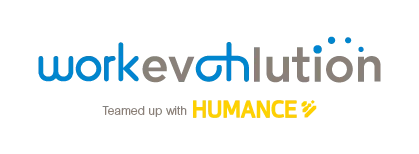As we emerge from the 18-month period of fully remote work, many organizations are planning to or already are reopening their office locations. They must decide: do they revert to the old way of working, or seize the opportunity to reimagine their workplace arrangement?
As discussed in our last blog article, The Post Pandemic Leader: The Future of Organizational Culture in the Hybrid Workplace, most organizations are pursuing the latter[1]–[2]. How will organizations compete for talent if they fail to recognize the potential benefits of a more flexible and fulfilling approach to work and life? Not wanting to lose the war for talent, most organizations are planning to implement a hybrid workplace, where employees can work from a combination of the office and remotely.[3] A workplace that offers the best of both a remote and office environment is often found to be a recipe for stronger commitment, increased performance, greater well-being, and a strengthened employee value proposition.[4]–[5]
However, leadership in the hybrid workplace comes with new challenges. Whereas pure office or remote work designs reduce complexity and provide a “level playing field,” leadership in hybrid models will involve a different set of challenges, one of which will be maintaining fairness and inclusion across multiple work environments and physical locations. This calls for an active effort from leaders to create a thriving hybrid team dynamic, where all people feel part of the whole. In this article, we shine light on how leaders can learn how to best excel in the hybrid workplace.
Navigating Change Through Leadership
In our last article, we focused on organizational culture. Now, we are looking at another critical lever for leaders to keep an eye on: inclusion.[6]–[7]. Below, we will explain the importance of this lever, its relevance to hybrid work, and what leaders need to look out for when it comes to inclusion in their hybrid workplaces.
Inclusion
In some respects, remote work during the pandemic “leveled the playing field” because nearly everyone was working remotely. There weren’t individuals calling in for a board room meeting where everyone else was face-to-face. As such, there was no longer a way for folks on-site to gain an advantage over those working from remote locations purely through increased visibility and so called “face time.”
The hybrid model will initially create some challenges for maintaining inclusiveness. Many are concerned about the stigmatization of those opting for more remote work, and the potential for assumptions about remote workers slacking off and not wanting to work hard or achieve the next promotion.
On-site visibility could lead to unfair advantages, and favoritism when leaders have more informal conversations with those in the office and rely more on them than folks who are more often working remotely. Indeed, remote workers may suffer from being “out of site, and out of mind” (pun intended). Those calling in to a meeting from a remote location, while others are together in a conference room, may not equally experience and participate in the meeting. How do you bring remote meeting attendees into the energy of an otherwise face-to-face meeting?

These challenges for inclusion must be addressed pre-emptively. Leaders need to work with their direct reports to make sure the right balance of home and office days is achieved, in order to suit:
- the needs of the team,
- the individual’s preferences, and
- the job requirements, based on key activities.
These decisions need to be discussed with the team, so that everyone understands each other’s ideal balance of office and off-site workdays, and everyone’s individual autonomy is respected. There are many habits and skills leaders need to develop to manage inclusively in the hybrid environment. Our team has built a blended-learning experience into the CONNECTED: Remote Leadership Fundamentals virtual development path, as one means for leaders to develop in a flexible, on-the job manner.
Another solution that has helped many employees is the Distributed Work Profiler, an empirically based personality assessment that identifies the alignment of an individual’s personality traits with the requirements of distributed work success, including the hybrid workplace. Tools like this should be used so that every person can understand their own alignment and their team members’ alignments, in order to strike the right home/office balance throughout the whole team.
Leaders set the example by treating employees consistently and fairly, regardless of their degree of remote work, and by rewarding employees based on results, not mere presence at the office. Leaders also set the example by addressing negative stereotypes or exclusion of those who work remotely more often. There are many reasons why employees may choose to work remotely, and preference or rewards should be performance and contribution-based, rather than stereotype-based.

Presenteeism refers to the lost productivity that occurs when employees are not fully functioning in the workplace because of an illness, injury, or other condition. Even though the employee may be physically at work, they may not be able to fully perform their duties and are more likely to make mistakes on the job. I suggest changing it for presence at the office.
Remember, performance is not time spent in a cubicle or office on-site. Performance is a unique combination of behaviors and the tangible products of those behaviors relevant to a position, team, and organization. Leaders need to be skilled at managing performance by results, regardless of where their people are located, and not playing favorites based on who’s in the office and who isn’t.
Leaders set the example by treating employees consistently and fairly, regardless of their degree of remote work, and by rewarding employees based on results, not mere “presenteeism”.

[1] Advanis (Feb, 2021). Canadians managers and employees are interested in a hybrid WFH arrangement. Mental health, and the impact on team collaboration and creativity, are top concerns managers and employees alike would have if permanently working from home. Link
[2] Ozimek, A. (2020). The Future of Remote Work. Upwork. Link
[3] Baker, M. (Jul, 2020). Gartner Survey Reveals 82% of Company Leaders Plan to Allow Employees to Work Remotely Some of the Time. Gartner. Link
[4] SHRM (2020). Managing Flexible Work Arrangements. Link
[5] Biro, M. (Oct, 2019). When It Comes To Employee Engagement, There’s No Place Like Home. Forbes. Link
[6] Wiles, J. (Jan, 2021). Are You a Hybrid Workforce Champion or a Laggard? Gartner. Link
[7] Mortensen, M., Haas, M. (Feb, 2021). Making the Hybrid Workplace Fair. Harvard Business Review. Link
Article originally published by Work EvOHlution™



